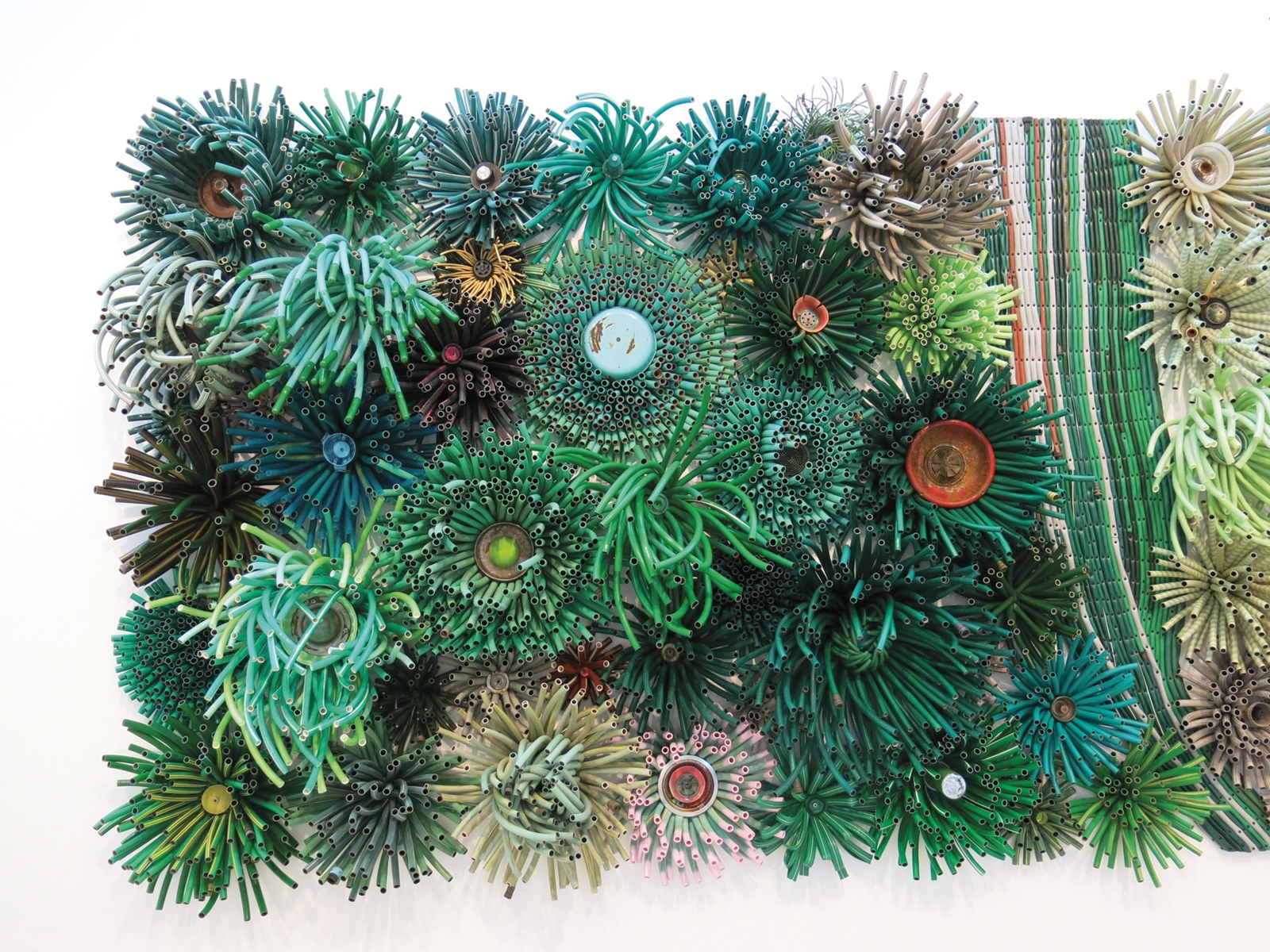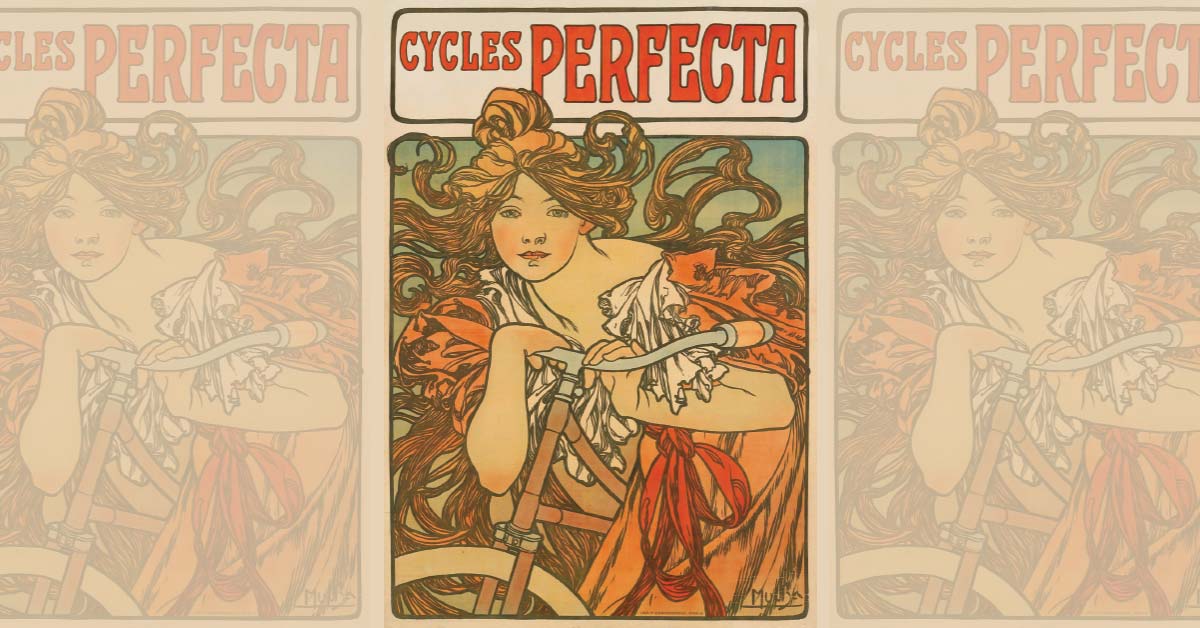At first glance, the large-scale wall installations and sculptures look like succulents and flowers, multi-colored woven rugs, moths and butterflies.
But look closer, and an array of discarded and repurposed materials, carefully pieced together by shape and color, come into focus, stirring questions and reflections about nature, the environment and consumerism.
Ohio artist Michelle Stitzlein creates large mixed-media pieces from otherwise ordinary and mass-produced materials destined for the landfill — garden hoses, piano keys, phone and computer cords, electrical wire, bottle caps, license plates, pots and pans, and other plastic pieces and parts salvaged from the junk drawer.
Her work, shown in solo exhibitions in galleries and museums nationwide, is the focus of Saugatuck Center for the Arts’ Industrial Nature exhibition, on display through Sept. 7.
She plans to show several pieces from her Fynbos, Moth and Lichen series at the SCA. The Fynbos Series, named after the shrubland ecological zone in the Western Cape region of South Africa, includes large and colorful works inspired by the exotic, spiky flower heads of the protea and common house plants and succulents. She started working with garden hoses in 2013 and now has 10 or 11 large-scale works in the series.
“I have never seen anybody work with garden hoses in this format,” she said. “I am pretty excited about it — this is a whole process that I have created from the very start. Basically, each piece I make, I learn something or I get a new idea that takes me to the next piece.”
In part, the pieces speak to the drought currently plaguing that area of South Africa, and the importance of water to our environment. Viewers can interpret that message through her creative use of garden hoses that artificially bring water to areas we should or should not be watering, she said.
Stitzlein explains: “This tension between the object’s former industrial life and its transformation into a work inspired by the natural world provides a valuable dialogue about consumerism, industrial production and the sublimity of nature.”
Some of her pieces are 30 feet long and invite viewers to look closer at all of the individual parts that are put together to make one continuous visual piece. They encourage viewers to consider all the items people throw away, between what it used to be and what it is now, and how those items can be repurposed.
“We’re excited to be able to share her unique process with all kinds of viewers and we hope that it will encourage viewers to stop and look closer and ask themselves how they’re impacting the world and taking care of the world we live in,” said Whitney Valentine, SCA’s education and exhibitions manager. “She’s not altering any of the objects. All the wire and hoses are in their natural color, she is just cutting and repositioning them.”
Stitzlein grew up around art, visiting museums with her artist mother, and married into a family of artists. After graduating from Columbus College of Art & Design, she worked in interior design and then marketed the work of Ohio craftspeople and managed two retail stores for Ohio Designer Craftsmen.
Marrying artist Nathaniel Stitzlein, who also owns Crow Home Inspection, in 2000 allowed her to pursue her own art and travel the world. Her husband helps run arts and crafts tours across the globe, allowing them to visit South Africa, India, Guatemala, Peru, Mexico and Bolivia. She also worked as a freelance consultant and helped artists in Peru and Columbia market their work.
On those trips, she met artists working with a variety of recycled materials — oil drums, plastic bags, car tires — to make shoes, crafts and other useful items to sell and make a living.
“Sometimes, those materials are found on the street. Sometimes, they’re found in the landfills,” she said. “I was really inspired by a lot of what we were seeing, really clever incarnations of recycled materials.”
Those experiences prompted her to see what she could do with plastic and other mass-produced items back at home. Stitzlein and her husband bought a former grange hall in Baltimore, Ohio and converted it into a home with a large studio on the second floor.
Today, her vehicle and studio overflow with water hoses. Stitzlein and her friends and family stop in traffic and jump out to collect them. Everything in her house is also reused, recycled or salvaged from a landfill.
“I’m an artist at heart and I do believe strongly in trying to utilize materials that are not going to affect the planet any more than we already have, and in trying to be more resourceful in our daily life,” she said. “I hope that my work, when people see it in public, that they are inspired to be more resourceful in their own lives.”
In addition to Stitzlein’s work in the gallery and garden, the SCA has programming planned throughout the summer related to her show, with themes of nature and recycling and consumerism.
She has exhibited in museums and galleries across the country, but Stitzlein doesn’t rely on selling her work to make a living. There isn’t much of a collectors market for huge works made out of garden hoses and discarded plastic.
“I am primarily creating work for myself and to share with the public,” she said. “I do hope they realize our resources are limited and that especially single-use products are pretty detrimental to our environment. That is why I have chosen to work with themes around nature. There are really simple things that we can do to help.”
Besides helping her husband with his business, she travels the country teaching workshops at elementary schools, art camps and arts festivals. In August, she heads to Denali National Park & Preserve for an artist residency.
Since 2003, she has worked with more than 100 elementary schools and thousands of students as an artist-in-residence. She encourages environmental awareness and recycling using the plastic bottle cap — something that is not recyclable — as her medium and as a teachable moment to illustrate how much plastic ends up in a landfill.
The workshops also allow the students to use drills and other tools, showing they can use something as simple as a bottle cap to make colorful murals and whimsical outdoor sculptures.
“The entire community is saving caps and they pile up at the schools,” she said. “It’s a good visual, ‘Look at all of these caps, piles and boxes of caps that were going to serve no purpose.’”
Industrial Nature: Works by Michelle Stitzlein
Saugatuck Center for the Arts
400 Culver St., Saugatuck
June 8-Sept. 7
sc4a.org, (269) 857-2399
Opening Reception
June 8, 5:30-9:30 p.m., free
Featuring nationally acclaimed ensemble Bash the Trash, community parade, instrument
building and art activities, a collection of local food trucks, and craft beers.





